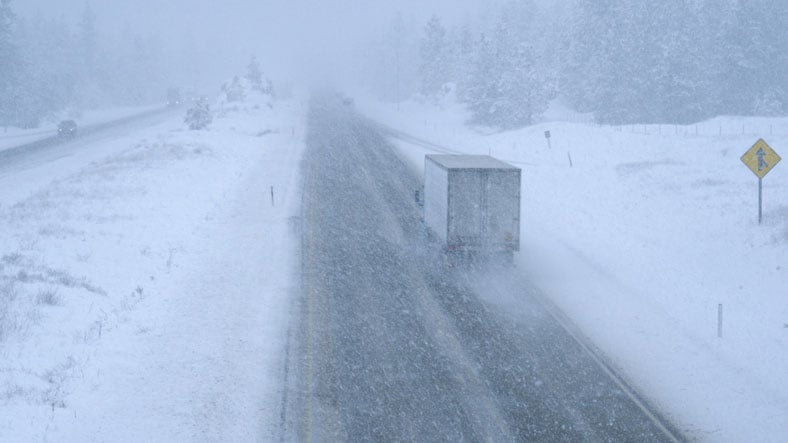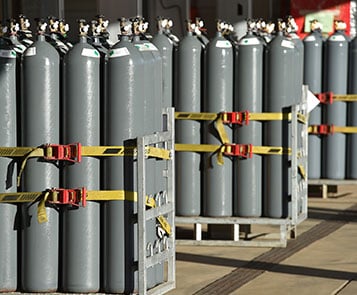6 Safety Practices for Highly Hazardous Lab Chemicals
The laboratory is a place of experimentation and exploration, but it can also be a place that poses risks to workers. Especially since they are constantly exposed to the possibility of injuries if risk is not adequately handled. To keep laboratories safe and clean, energetic materials such as dinitro, trintro compounds, peroxide formers, flammables, organic peroxides, oxidizers, pyrophorics, unstable reactives, and water-reacting products must be managed carefully and disposed of by hazardous waste experts. Accidents can happen when high-hazard compounds are processed and treated incorrectly in laboratories: a crystal forms in direct sunlight, or an uncapped container is exposed to oxygen, resulting in an explosion. An accident like this places your workers' lives in jeopardy, and may cause damage to your company’s facility, equipment, and reputation.
You can't just follow the bare minimums that EPA and OSHA lab safety standards demand of your company if you want to achieve zero-error lab safety. You must stick to industry best practices. Here are six methods for keeping the company compliant when handling lab chemicals.
1. Have a Real-Time, Accurate Chemical Inventory
Maintaining an accurate chemical inventory list on site will assist you in detecting possible high-hazard material and extracting it before it becomes a threat or may be treated as an explosive. Just building this inventory and keeping it up to date on a daily basis is not enough. When a new lab chemical comes in, you must have a procedure in place to ensure that it is added to the master chemical inventory list. You run the risk of new lab chemicals and potentially energetic products falling between the cracks if you just refresh this list every so often.
If you have energetic products in your lab and you can't say for sure that all of the things in your laboratory are listed in the inventory, you should take action. Look through your lab to identify any containers that may be of concern. When you can't identify what’s in a container, peroxides and explosivity testing can determine how high-risk the substance is. Having a complete chemical inventory list on-site is much easier with an automated inventory system rather than an Excel sheet. It also offers real-time updates to users on your platform.
By tracking your inventory with a chemical inventory system like this, you avoid a situation where employees think that the organization or their department has materials that are unavailable, or vice versa. Many companies have an internal barcoding system to register containers as they first enter the lab and then when they are disposed of. However, if your lab has a barcoding system, consider how you'll treat scan errors or system failures. A chemical inventory management system is critical for staying organized.
2. Proper Chemical Labeling
A chemical should be labeled as soon as it enters your organization's inventory. Chemical mislabeling can quickly lead to an emergency. For example, a researcher may place a mislabeled peroxide-former in direct sunlight or may not test it on a regular basis if there is no label at all. Chemical labels should include the date collected on, opened on, and re-test or disposal on. Labeling standards are divided into two parts: first, ensure that the right labels are applied on all bottles, and second, ensure that the workers who manage the bottles are properly trained. If the bottles have wrong or no labeling, or if your lab employees aren't handling chemicals properly, they might be unaware of chemical risks, handling requirements hazards, or the effects of poor management.
It should be clear who is responsible for labeling. Is it the responsibility of your environmental, health, and safety (EHS) department? Or do you have a department dedicated to inventorying? Are your researchers trained to do it themselves? You need to provide lab safety training and confirm competency of those involved.
3. Compliant and Safe Chemical Storage
To review national guidelines for the proper storage, use, and handling of hazardous materials in your facility, reference the National Fire Protection Association (NFPA) 400: Hazardous Materials Code, NFPA 45 Fire Protection in Laboratories.
When storing energetic materials, keep possible explosives in a calm, dry spot, such as a cabinet. This will save them from drying out. Do not leave high-hazard bottles uncapped, in warm environments, or in direct sunshine on a lab table. Bottles containing dinitro or picric must be completely closed to prevent water from evaporating and drying out the chemical. Materials like this need to be 30% water at all times, or else they become potentially explosive.
4. Perform Routine Lab Cleaning
If you want to remain in compliance, don't just focus on the necessary daily waste collections. Perform annual laboratory cleanouts of old chemicals to catch any chemicals that have been left on shelves for a long time but have yet to be classified as waste. Department managers or lab directors can consult with lab safety coordinators to discuss the importance and technique. Make this process as easy as possible for researchers so that all they have to do is point out what can be disposed of; the easier the process, the more likely they will be to get rid of old bottles.
5. Centralize Purchasing New Lab Chemicals
When you buy chemicals in a cost-effective way, you not only mitigate pollution, but you also increase protection. You remove empty bottles from the equation by streamlining buying by a single authority – whether that authority be one person or one agency. If you are unable to streamline purchasing this way, at the very least, designate one person as the approver of all purchase requests with waste minimization objectives in mind.
Another critical part of standardizing buying is ensuring that analysts have reliable figures for the amounts of chemicals that are to be bought. Additionally, you may want to consider that buying chemicals in bulk can lead to surplus chemical waste. By improving supply chain management and enhancing communication between researchers about surplus chemicals available, you decrease the risk of hazardous chemical accidents in your laboratories.
6. Ensure That Your EHS Personnel Are Trained on All Chemical Safety Hazards
The employees responsible for health and safety within your organization’s labs need to be trained to inspect and to recognize outdated items, illegible labels, leaking lids, degraded containers, and crystalized contents in bottles. Additionally, training needs to carry over to all of your researchers who handle highly-hazardous chemicals. If the knowledge about how to manage and recognize hazards with these chemicals resides primarily with EHS, then it falls apart at the most important point – during the research.
Our environmental experts at Triumvirate offer comprehensive lab and facility services. To learn more about our onsite chemical inventory services, click below.






